Meet The Man Who Shaped Tom Curren’s J-Bay Masterpiece
“I shape boards for people, right. I don’t make models and go, ‘here y’are a new model.'”
Mark Rabbidge remembers the phone call like it was yesterday. The year was 1993 and Derek Hynd, the one-eyed former-pro surfer turned leading finless exponent, was steering the ship at Rip Curl. He had a vision of his charger Tom Curren doing his thing at J-Bay and needed a board, the perfect board. He picked up the phone and called Rabbidge.
“I can still remember the thought process,” recalls Rabbidge of the call. “I thought, ‘Hmmmm, okay I believe that this is the best wave in the world. I also believe Tom (Curren) is best surfer in the world. This is a really unique opportunity,” he laughs.
Rabbidge, already an established pro surfer-shaper throughout the seventies and eighties, knew Curren well. He’d made him boards for contests in Australia in the past while Curren had returned the favour giving Mark’s wife, professional surfer Pam Burridge, one of his custom Maurice Cole shapes. Curren and Pam Burridge were also both world title winners in 1990.
Rabbidge was also familiar with J-Bay. He’d lived on the point for a while when Derek Hynd was building his house there. As a traditional hand-shaper, Rabbidge’s methods relied, where possible, on intimate knowledge of the surfer and the wave.
“I shape boards for people, right. I don’t make models and go, ‘here y’are a new model,’” he says.
“With Tom’s one I knew J-bay having been there, it’s an amazing wave where you can ride boards with a lot of waterline length and still do shorter-board maneuvers because the wave has so much draw off the reef.”
“The way it comes off the bottom you see a section where on a normal board you wouldn’t make it, but at J-Bay you just lay into it and you make it. It’s just an amazing draw with the way the water comes off the reef and with that in mind that’s what I set about doing,” he recalls.
He made him two boards – a 6’6″x18 1/4 x 2 5/16 and a 6’9″ x 18 3/8″ x 2 3/8. “I went up by three inches in those days,” he says,
Curren rode the 6’6 on that fateful wave, a design Rabbidge says “had small boxy-rails, the bottoms were slight roll-bottoms and bonzer concaves between the fins, at the same angle as the fins, and tail-lift jump at the side fins, and another tail-lift jump at the tail fin, all blended together so nothing would catch,” he says.
He also painted it with a yellow bottom and rails, and a black pin, “because no one was doing that at the time and I wanted it to stand out. Bright colours flash when you do a bottom turn,” he says.
History will ultimately decide but Curren’s second ride at J-Bay is arguably the best combination of surfer and wave ever recorded. Often forgotten amidst the sheer viewing pleasure is the board he’s riding. Mark doesn’t mind but he doesn’t forget either.
“I remember when I first saw that footage I went yep, that thing does nothing wrong! It was just cool the way it went through the way,” he says, adding, “the little things shapers look at aren’t big turns. It’s the little subtleties, the between the moves stuff and that thing did it really sweetly.”
The reviews from Curren were glowing. “Tom loved that board,” says Rabbidge. So much so he took the board back to France where he and Maurice Cole set about building on the design, eventually developing the revolutionary reverse-vee template off it. Maurice Cole is often credited with making the J-Bay board but it was all Rabbidge. And he believes the designs from that era haven’t been bettered when it comes to flawless, down-the-line point waves.
“To this day I still don’t think guys should be riding a lot of concave in fast or bigger waves,” he says.
“If you can push volume you’ll go so much better; you’ll go faster, you’ll do bigger manoeuvres, you’ll do everything. Boards I made for Sunny (Garcia) and Barton (Lynch) back in the ’91, ’92, ’93 were 2’5/8s thick. That’d be unheard of a couple of years ago. They were big boards but they liked to throw ‘em down the line and they could get em moving,” he says.
He is also deeply critical of the uniform direction board design would take in the coming years. Something he attributes to the influence of the ASP/WSL.
“When I used to compete as a kid and you lined up on the beach to go surfing there might be me, Nat (Young), Jack Ladder, Col Smith from Narrabeen…”
“Each one of those guys was a shaper and designer… we were all developing the surfboard back then and we all had different concepts of what was right.”
“What’s happened over the years the ASP or WSL or whatever it’s called now has determined surfboard design more than anything else and it’s through surfers trying to gain points.”
“For years they’ve all tried to look the same and be better at being the same and I think a lot of that has come from the likes of Cheyne Horan in the past who were stigmatised for riding equipment that was a little bit different to what everyone else was riding,” he says.
So frustrated did he get watching Mick Fanning and Steph Gilmore at different stages of their careers he almost picked up the phone to Darren Handley, whom he knows well, and gave him the what for.
“I’m a real fan of Mick and Steph Gilmore so I was biting my tongue not ringing Darren and saying, mate you’ve gotta do something with these boards, they’re flapping! Just going, ‘what shit is this?” he laughs, adding, “Not in a nasty way. I don’t give a fuck about board sales. I’ve retired. I’ve made my money but I am still a fan of surf design.”
Today, in his mid-sixties, Rabbidge still watches most World Tour events and follows design trends as intently as ever. For the record he was ecstatic to see Fanning’s latest J-Bay model.
“Look at what Fanning just won on at J-Bay. That board had a lot of vee in the tail and even those channels that were put there, those channels were on an angle, they weren’t straight and they put vee in the tail and that board went through the water like butter,” he says.
Generally, Rabbidge thinks shaping and surfing is on a weird path, recalling the time he sat at Manly watching a morning session not too long ago while waiting to drop some boards off at the nearby Aloha factory.
“Being a shaper that’s what you do, you watch people surf, you’re looking at the trends. Nearly everyone walked past me looked like Kelly Slater or Mick Fanning or fucken Parko. They all looked the same, they all had the right gear on, and had the latest thing under their arm and they were all out in the water,” he begins.
“I counted 35 waves that were caught and ridden and 35 waves with different people riding them before someone did more than one turn! They’d go to the bottom and fall off or they’d push too hard and fall off, or they’d try an air,” he laughs.
Still, it’s better than where we were.
“I’m stoked people ride all kinds of equipment now. We went through a really dull period in the nineties. Everyone was riding the same, and now everybody has opened their mind up to riding different things,” he says.


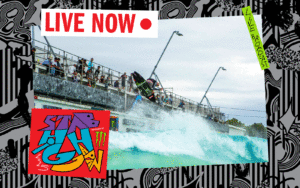
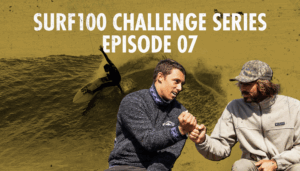
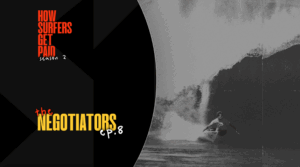
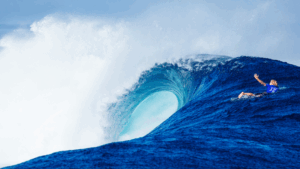
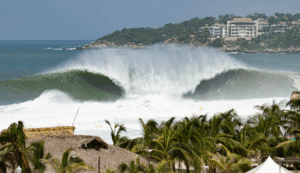







Comments
Comments are a Stab Premium feature. Gotta join to talk shop.
Already a member? Sign In
Want to join? Sign Up